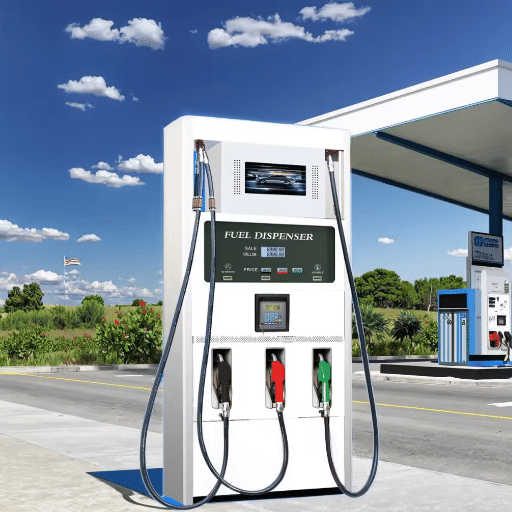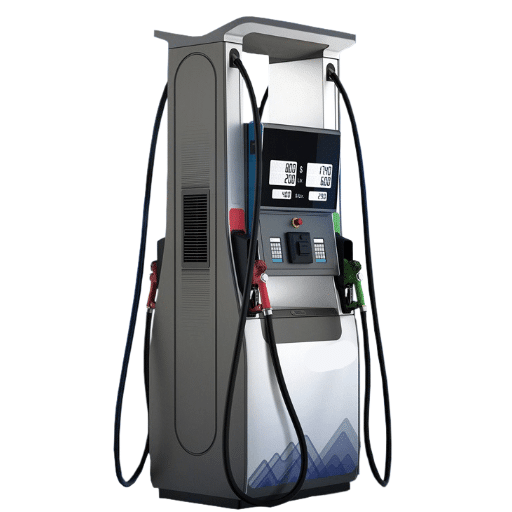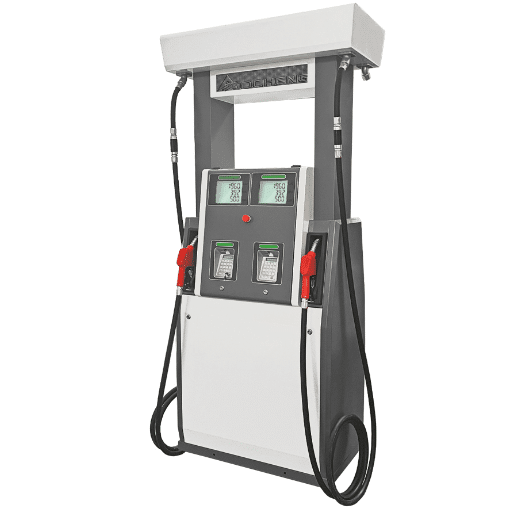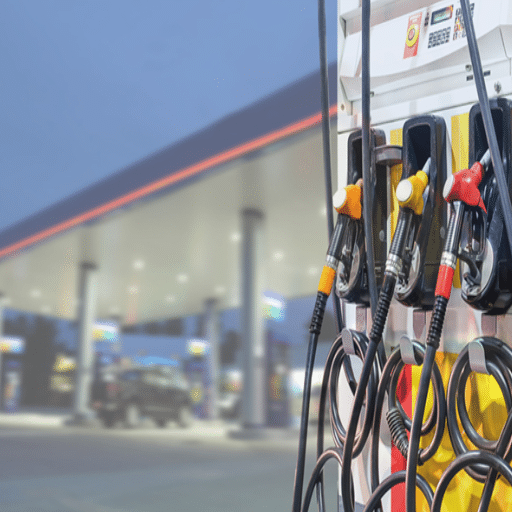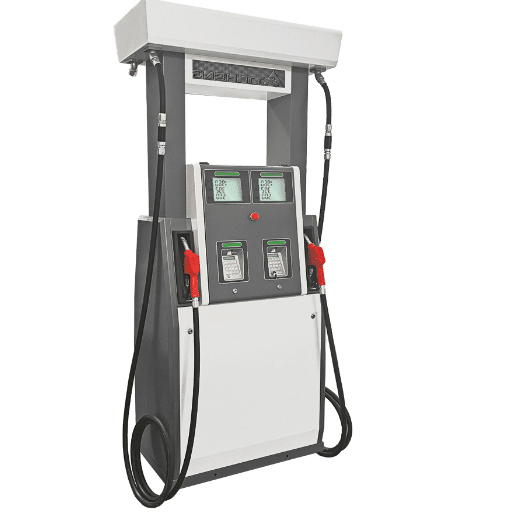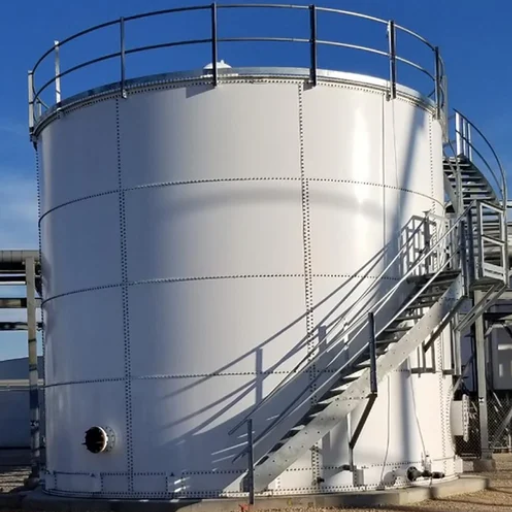The efficient and safe bridging of the gap between manufacturers and conventional logistics, agricultural firms, and construction requires a very present fuel supply and transfer. Traditional methods for fueling are plagued by risks because they imply spillage, wrongful fueling due to incompatible equipment, and much inefficiency—possibly resulting in standpiping and even workplace hazards—but with the advent of portable fuel dispensers, every step of the fuel transfer is being streamlined into an altogether different perspective. It is being explained how these advanced dispensers are heralding an all-new era in the field of fuel filling, with some benefits and applications that everyone interested in skimpy refueling for their fleet or other operation might appreciate.
Introduction to Portable Fuel Dispensers

Portable fuel dispensers are versatile devices designed for efficient and safe fuel transfer in various surroundings. They are a handy, user-friendly kind of equipment from which one can expect consideration of precise fuel quantities and fuel efficiency. Such tools are frequently used in builders, farmers, and trucking companies for the refueling of vehicles or equipment on site so as to minimize downtime of operation and increase production efficiency. Portable fuel dispensers are built to withstand and provide a favorable reaction in hard and harsh conditions due to the use of robust materials and safety precautions. It is known that portable fuel dispensers cater to the needs of convenient, mobile, and cost-effective fuel management for their extensive work.
What is a Portable Fuel Dispenser?
A mobile fuel dispenser, on the other hand, means a unit that minimizes, partly or wholly, the need for fixed structures and can concomitantly support the required service level. What takes place in the literature comprises components like fuel, tanks, pumps, hoses, nozzles, and digital metering? There is a provision in these mobile facilities for the accurate measurement and dispensing of fuel. Mobile fuel tanks have extensive applications in different industries: construction, agriculture, and transportation are examples of them. These units allow on-site refueling, thus avoiding fuel handling activities; hence, diversional fuel delays are done away with. By using appropriate and tough materials and safety provisions to meet safety standards, all this equipment is designed to withstand harsh environments. This ensures fuel operating solutions that are dependable and safe.
Benefits of Using a Portable Gas Dispenser
Efficient and Time-Saving
Mobile gas dispensers allow refueling on-site, thus avoiding the need for machinery or vehicles to come to a fueling station. That will save a substantial amount of time and increase operational efficiency, especially in large and distant job sites.
Cost-effective processes
These fuel dispensers help to reduce consumers and save money on transportation while in use, due to localized refueling facilities, eliminating unnecessary trips accompanied by high fuel costs. Secondly, because they reduce wear and tear on the equipment, significant savings in cash occur.
Versatility and Mobility
Small and portable-style dispensers can be found on the market. When one needs a solution for transporting fuel to off-grid locations, the dispensers can be carried to locations such as construction sites, ranches, and other work areas. Their flexibility thus ensures a ready supply of fuel in most locales.
Enhanced safety features
Mechanical Fail-Safe features are built into fuel equipment, embodying anti-spill and overflow valves, automatic shut-off facilities, and a solid build that meets safety criteria in the industry. Where these portable products come into operation, safety in the handling of fuel specifications is valid even under challenging environmental conditions.
Fuel Metering Accuracy
Fuel pumps and other equipment comprising fuel dispensing technology feature highly sophisticated meter systems that are extremely sensitive to changes in fuel count. This complete accuracy is helpful for fuel inventory management and operational accountability.
Environmental and Regulatory Compliance
Fuel dispensing equipment that is built modernly requires measures to check leakage and evaporation, thereby making it a less harmful environment. They meet stringent regulatory requirements to ensure sustainable business and validity.
Applications of Portable Fuel Dispensers
Portable fuel dispensers are utilized across the board over a variety of industries by reason of their versatile capabilities and efficiency in handling fuel. Common applications:
Construction and Mining
Heavy machinery in secluded construction sites or mining operations is essential to portable fuel dispensers, inner-lying mechanical life literally breathe by the foot of one’s mobile dispensing apparatuses, accounting for occasions without infrastructures and operational downtimes.
Agricultural
Farmers rely on portable fuel dispensers if they want to keep their tractors, harvesters, and whatever other machinery moving in such a system that they relieve their few and far between land farms appreciably in regard to on-site refueling during planting and harvest seasons.
Transport and Logistics
The portable fuel dispensers facilitate one, the account of the fleet vehicles gets off at their convenience, either at the depot or somewhere on the road to execute re-fuelling, and will not require driving to fixed fuelling fittings, therefore making logistics speedy.
Emergency Response and Relief
In emergencies, portable fuel dispensers play a crucial role in providing fuel for rescue vehicles, generators, and miscellaneous vital equipment during disasters. This is especially true in areas where the fuel infrastructure is inadequate in providing supplies.
Maritime and Aviation Sector
They are primarily intended to fuel the small vessels, boats, or private aircraft at remote locations, which traditionally lack the means to offer the fuel for running aircraft and marine vessels without a break in operations.
Therefore, portable dispensers serve many varied purposes, allowing for enhanced operational flexibility and cost efficiency across industry sectors.
Types of Portable Fuel Dispensers
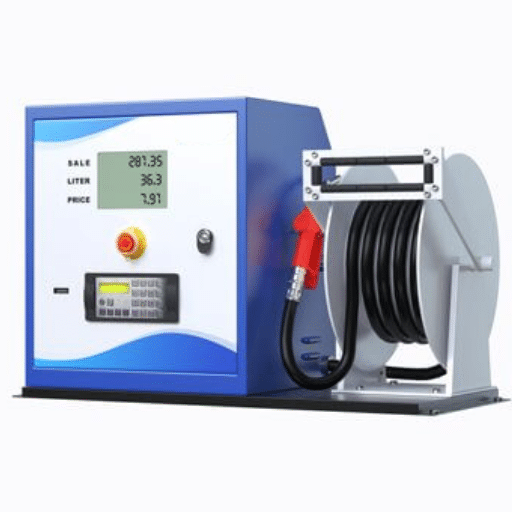
Manual Dispensers
They are uncomplicated machines requiring manual labor, yet economical and easy to handle. For the sake of simplicity in terms of refuelling on small scales, these dispensaries are put in places more remote and less in demand.
Electric Dispensers
Used for dispensing fuel at a quicker rate than what can be obtained with manually operated pumps. It is well-suited to employment in medium-scale operations.
Battery Dispensers
Comprising rechargeable batteries, these dispensers offer mobility and flexibility for dispensing where there is no access to a power supply. Use can usually be found for them in field operations and emergency services.
Fuel-Specific Dispensers
These dispensers perform their traditional refuelling duties in distinction depending on which type of fuel they are specifically designed for: Diesel or Petrol, each having components greatly tailored for their safe and efficacious distribution.
Dispensers for high flow
This is specifically for mechanical jobs where huge quantities of gas have to be distributed pretty fast. All these are equipped with refined pumps and storage systems.
Each dispenser type is highly specialized for particular uses and can be tailored appropriately to suit the operational requirements for efficiency and safety.
Gasoline Dispenser
Everyone would agree that a gas pump is mandatory equipment to be equipped at any gas station for delivering gasoline effectively and securely to car tanks. This happens by withdrawing fuel from underground storage tanks for which a calibrated meter is run for precise measurement. A typical up-to-date gas dispenser includes built-in electronics like digital visual displays, swiping card machines, and automatic control software, which sharply improves the integrity of the process.
Key Features and Operations
| Feature | Description |
|---|---|
| Flow Rate and Accuracy | Gas dispensers have a preset rate for gasoline output, thereby making sure that the gas delivered to a customer accurately relates to precise measurements as required by regulatory standards. |
| Safety Mechanisms | Built-in safety features like emergency shutoff valves, vapor recovery systems, and breakaway couplings are put in place to substantially reduce spillage concerns and thus accidents. |
| Monitoring Systems | Refueling stations can be connected to monitoring systems to provide immediate information on fuel levels, usage, and transactions, in turn improving inventory management and cutting down on errors. |
| Durability | The construction of these devices, using highly durable materials, aims at long operational life in the face of adverse climatic and environmental conditions. |
The gasoline pumps differ as to capacity and sophistication to meet their operational purposes, extending from simple pumps for small refueling stations, configured for resistance to the high-volume, high-throughput selections for commercial outings.
Diesel Dispenser
Diesel dispensers are very sophisticated machines designed for the highly precise, efficient, and accurate distribution of diesel fuel through precision meters to measure the volume of fluid dispensed. They are usually fitted with a range of nozzles that decrease spillage and widen the working range of the dispenser. Several diesel dispenser models may be available, varying based on the quantity of diesel that may be dispensed and the level of sophistication of the technology it uses. For refueling at smaller fuel points, standard models are generally used, while high-speed terminal-grade dispensers are for applications requiring a very long list of fuel demands, such as logistics hubs, agricultural sectors, and marine refueling.
Among others are rugged construction to make them last in harsh conditions, multiple integrated filter systems to remove dirt from fuel, and electronics that allow for digital data collection on dispensed volume. These systems, however, often bundle smart connectivity features, such as Internet of Things (IoT) integration, that allow operators to monitor fuel usage and inventory remotely, optimize schedules for preventive maintenance, and reduce operational downtime.
Electric Portable Fuel Pump
The electric portable fuel cell is an easy-to-handle, smart device aimed at silently transferring fuel between various applications such as automotive, agricultural, or industrial settings, as well as pumping from drums or bulk tanks. These pumps operate through electric power (from an external outlet) to a motor, enabling them to deliver steady performance and better control of the outlet flow of fuel.
The salient features of the electric portable fuel pump:
- The machine is lightweight, plastic, while the constructions stand at its best
- The capacity of this pump is to work with differing types of fuels: kerosene, diesel, and gasoline
- There are many fail-safe mechanisms, one of which is the absence of any spillage
- Most pumps are self-priming; hence, these are really comfortable when in operation, even with limited human involvement
When you are considering the selection of any portable electrical pumps, the most commonly used elements include the rate of flow, the suitable transfer efficiency, voltage compatibility, and the length of the hose. Many of these electric pumps today come equipped with the latest advances, such as smart automatic shut-off features and built-in filters guarding against contamination in order to provide yet more safety and efficiency operating within tough contact situations. Definitely, they are of great value to anyone anywhere handling fuel or involved in requiring dependable and safer fueling features.
Components of a Portable Fuel Dispenser
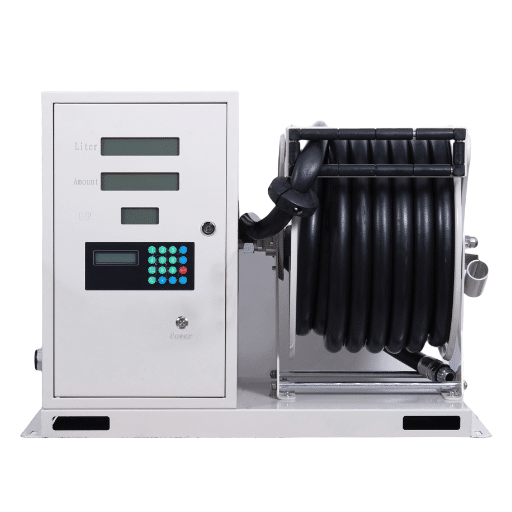
The typical portable fuel dispenser comprises:
| Component | Function |
|---|---|
| Pump Unit | Acts as the heart of the dispenser, delivering fuel from the storage tank to the reservoir. |
| Motor | Powers the flow of fuel by stoking the pump. |
| Meter | The heart of the dispenser, which monitors the quantity of fuel dispensed in accurate figures. |
| Nozzle | Opens to dispense fuel and shuts to stop the flow; it also ensures precision in the quantities dispensed. |
| Hose | The hoses, working like fuel conduits, are flexible pipes that link the pump and nozzle. |
| Filters | They sift out unwanted solid particles or impurities in fuel to protect the system; such particles may cause system blockages or contamination of the product. |
| Control Panel | Allows the user to run the operations, i.e., to start or stop the transfer process. |
These components come together in transportation for easy working applications to carry the fuel from storage to consumers.
Fuel Pump Mechanism
In the interrelation of a fuel system, a pump is essential to ensuring that fuel is effectively transported within the system. The operation of the pump is achieved through a combination of mechanical and electrical components to ensure that the fuel flow remains uniform. With the pump, the pump motor drives an impeller or diaphragm to create suction. The suction leads to fuel being pulled by the pump through the inlet valve from the storage tank.
In the interior of the streamlined pump, fuel is compressed to ensure a continuous flow, something that is critical to accuracy in dispensing. During this stage, a ditch filter would thereby filter out contaminants, which guarantees the purity and quality of the fuel. The pressurized fuel proceeds to the hoses and continues on its way to the nozzle, where there are intricate sensors that regulate flow, while a hatching-cutout mechanism outside is set here to stop spillage.
Pump systems, along with modern-day fuel, are basically systemized by the injection of some elaborate technology. It mainly has pseudo-microprocessor control technology meant to channel the functions of monitoring, displaying, and managing the motion of a pump for proper operation. In other words, to sum it up, this kind of abandon is very safe and user-friendly whenever used for automotive refueling stations or industrial fuel transfer.
Hoses and Nozzles
The hoses and nozzles do enjoy a pivotal status in a fuel-outlet system, a fact that must always be emphasized for such setups. True to their functions, these hoses are made of harder materials (such as synthetic rubber or polyurethane) to be practically pull-resistant, under normal pressure conditions-they will hold good against any chemical action caused by fuel. Furthermore, the hoses have become capable due to integrated antistatic features-which are aiming at the end goal of creating a spark-less transfer element that should strengthen one’s grounds for added protection.
Fuel nozzles come with finely honed good ball control capacities for manageably dispensing or stopping fuel anywhere between their complete flow rates; some specific nozzles can also be governed in a fashion to enable automatic shutoff. Whenever a tank is detected to have become full from the backpressure in the hose when being filled with fuel, an automatic toilet facility is automatically opened in the nozzle’s pump, allowing for free-flowing product, which will be shut off and discontinued for further spillage. Aerosol recovery nozzles have been introduced to advanced, superior systems to reduce emissions while refueling conformity with the regulations laid down by the environmental authorities. These varied subassemblies are all set up as an arrangement permitting controlled, unobjectionable fuel handling for service in multiple designs.
Fuel Tanks and Storage Solutions
Fuel tanks and storage solutions represent the most important components of an efficient fuel management system, while securely housing and allowing accessibility for many potential applications. In today’s world, consistent advances in technology make sure of the implementation of the most stringent standards of safety for fuel tanks by employing materials like steel or HDPE (high-density polyethylene) combined with advanced technologies to ensure against leakage and to comply with environmental regulations. For today’s storage solutions, secondary containment is an all-important feature toward preventing spills from contaminating soil and groundwater.
The tanks of storage for fuels are appropriate for diverse applications: from portable units for mobile requirements to the larger static installations designed for industrial clients. They are often fitted with level indicators, safety-relief valves, and anti-corrosion coatings. Special-Standard vent systems are used for gas-freeing requirements of certain storage locations, permitting long-term storage with a high degree of safety. These tanks are mostly constructed to accommodate alternative fuels, indicating new directions taken in the world of sustainable energy solutions.
Maintaining these tanks properly is therefore critically important to avoid operational problems such as water condensation, microbial infection, or rusting of the tanks, which may affect the quality of fuel. Though not exhaustive, recommendations for items of scheduled cleaning, periodical checkup, and adherence to manufacturer recommendations perform favorably to the longevity of the entire storage system. Through good design and proper management, modern tanks are the foundation for reliability, safety, and environmental compliance.
How to Choose the Right Portable Fuel Dispenser
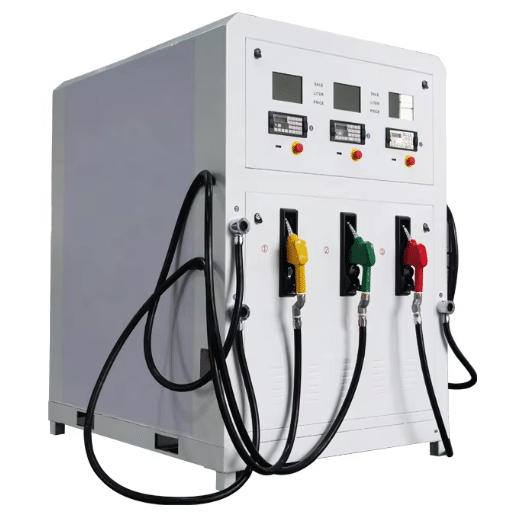
Choosing the best affordable portable fuel dispenser encompasses more than one significant consideration:
Fuel Type: Ensure the dispenser is fitted to the fuel you mean to use, like gasoline, diesel, or kerosene. Some fuel dispensers are multi-fuel because each fuel type needs a different dispensing system.
Flow Rate: Decide on the amount of fuel that must be delivered, but some commercials dispense with a range of delivery rates, the higher ones serving industrial needs, while the lower rates are wasted for a degree of nearly domestic use.
Portability: Flaunt the size, weight, and ease of mobility. Its earnings, sizes, and lightweight options with a strong self-imposed limit or wheel system, etc., are always highly portable for traversal.
Power of Dispenser Source: An electric oxygen/ fuel dispenser may not meet with any intention. Therefore, this is another point. You will see the electric alternative highly preferred by those who still go for gas-powered fuels or those who will use some other power supply.
Strength and Durability: In making decisions, reviewers say the durability and the manner of construction rank so high with the material used in dispensers kept in memory.
Safety features: For lowering or even unloading risks, put strong consideration in models with features like automatic shutdown, spill prevention, and compliance with industry safety standards.
By valuing these moments, one should be in a position to choose which type of mobile fuel distributor would be acceptable while ensuring the fuel distributor is of good quality and will last long.
Determining Fuel Type: Gasoline vs. Diesel
When choosing gasoline vs diesel, a major point to consider is engine compatibility. Then there is the gasoline’s efficiency, operating costs, and environmental reasons. Primarily suited to smaller engines and vehicles prioritizing lower initial costs, better driveability, and quieter operations, gasoline is abundantly available and usually less expensive because of relatively less complicated engines. Nevertheless, still less fuel-efficient when compared to diesel, which means it consumes more fuel.
Diesel is, after all, the one obvious candidate for fuel efficiency and energy density, which weighs heavily in its favor for use in universally heavy-duty applications such as trucks, industrial and automotive machinery, or vehicles doing heavy-duty transportation. Diesel definitely offers more horsepower (torque), maintains better fuel efficiency than its counterpart, and usually costs less in terms of the economic aspects considered for the benefit. Yet this is also likely to be more expensively priced upfront, although its cost of maintenance could also come out to be more in consideration of cheaper-scale fuel charges and better low-speed power generation. Diesel and, especially, the older engines, do cause much larger carbon black deposits. Diesel engines these days have been improved in this area only by increasing the use of exhaust tools designed to clean themselves, at the cost, however, of some rise in particulate emissions.
Eventually, the real need when considering the specific operational needs, usage possibilities, and cost considerations will be at your disposal to let you pinpoint which of the fuels best serves corporate optimisation for your equipment or vehicle.
Flow Rate and Efficiency Considerations
The roles played by rate of flow and efficiency in setting the bar high for the efficiency and compatibility of fuel systems, particularly as regards the comparison between petrol and diesel engines, should not be overemphasized. Owing to the high compression ratios and the resultant high energy extraction by scorching cubic fuel, diesel engines are much more gas-efficient than the two classes of engines. Consequently, fuel systems for applications requiring continuously high torque and long operational durations certainly fare better with diesel engines. Diesel fuel has more energy per gallon than gas, leading to an increase in its efficiency during high-energy tasks.
Generally preferred for applications requiring various responses adjusted to changing parameters, gasoline engines tend to be lower in initial prices, as they are more responsive in throttle action. Just managing the airflow rate goes a long way towards matching engine workload with fuel flow. The fuel injection system for any combustion engine, including spark-ignition and non-spark ignition, is still not in the “old school”—so innovators proceed to tinker with more and more areas of fuel injection and combustion. This innovative technology purports to inject fuel directly into the cylinder.
Portability and Mobility Features
Amongst the factors determining whether a system is suitable for wide applicability, portability and maneuverability are vital considerations. Among these are the size, weight, and configuration of the unit in question, which have a strong influence on how easy it is to shift about and deploy. If a setup typically comes down and gets on the move, compact and lightweight systems must fit in best, while folding parts or modular designs enhance adaptability and storage efficiency.
Design innovations, such as having integrated handles, wheeled bases, and ergonomic frames, aid in making the impending need for maneuvering across diverse terrains. Power source flexibility plays another big role in increasing portability, being, for most instances, battery-powered or hybrid, mostly when mobile systems are to be utilized in remote conditions that have limited fuel sources. Ultimately, prioritizing the portability features appropriate for its application will lead to enhanced operator productivity and fewer logistical choke points.
Maintenance of Portable Fuel Dispensers
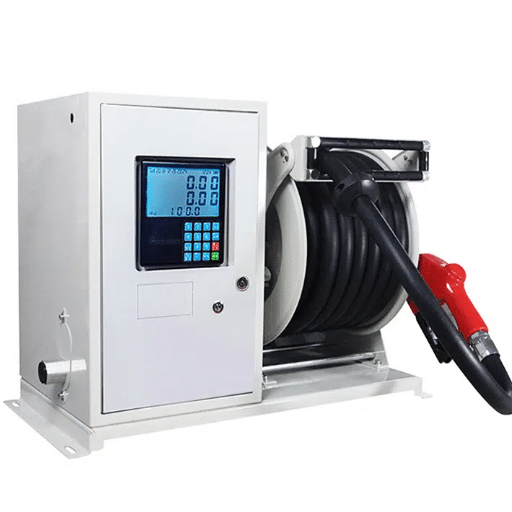
Regular care at intervals is a must if the safety, reliability, and effectiveness of the portable dispensers are to be guaranteed. Check:
Periodic Inspection: Constantly multi-inspect hoses, nozzles, and connectors for leaks, cracks, or signs of corrosion.
Cleaning: Wiping clean all dispenser components—filters and delivery nozzles—will stop the hindrance of contamination and dirty blockage.
Filter Change: Filter traps must be changed in accordance with equipment safety and the fuel-quality standards of the equipment.
Lubrication: All moving parts in dispenser systems may need to be greased to reduce friction and keep them in motion.
Calibration: Calibration would be followed, as per regulation, to make sure the delivery is still accurate.
Battery and Controls Check: Power systems must be assessed in relation to the battery and battery charge on battery models.
Adhering to manufacturer recommendations and scheduling routine maintenance are critically important to extend the useful life of equipment and reduce operational downtime. In other words, use approved parts and servicing techniques for safety and efficiency.
Regular Maintenance Tips
Inspect Regularly – Run a visual inspection on all the elements of the system to see if any of them show any wear, damage, or leaks. Addressing minor issues quickly will help prevent major breakdowns.
Lubrication, or Greasing, of Moving Parts – Ensure that all moving parts, such as those in chains, slide tracks, springs, etc., are well greased, as per the manufacturer’s guidelines, to reduce friction and from premature wear.
Replace the Filters in Time – Regular inspection and filter change statements are present in the warranty sheet; they will keep the equipment running at its best level and reduce contamination.
Cleaning and Calibrating the Systems – Maintain cleanliness and recalibration processes for the critical components, such as dispensers, to ensure the right calibration and industry-compliant operation.
Keep an Eye on Electrical and Battery Systems – Check the electrical connections periodically, inspect the cables for fraying, and be on the lookout for battery-life management to keep the surprise power failures at bay.
Documentation of maintained activities-Keeping detailed records of checks, replacements, and repairs conducted is helpful not only to monitor the health of your equipment but also to verify the “operativeness” of standard operating procedures.
By observing the systematic maintenance practices and following instructions set by different manufacturers, everyone can certainly experience better equipment performance in terms of reliability, efficiency, and conservative disciplines.
Common Issues and Troubleshooting
For common issues, I would diagnose the ultimate cause in a systematic approach meticulously before going on to fix the latter. In case operational flaws occur, I search for indicators of incorrect configurations, wear and tear, or loose items. In case of poor performance, I observe and scrutinize calibrations and usage practices in order to detect any deviations. I am teaching the engineers to look into the technical manual for the steps required for diagnostics at the time of maintenance, and ensure to put in sequence the process and do the necessary documentation in the guide materials for reference. With my method, adherence to the standard procedures and precision are the designated intentions for ensuring optimal performance and minimizing downtime as much as possible.
Importance of Fuel Filters
The fuel filter is needed to keep the performance and durability of an engine well above the level; it restricts contaminants such as dirt, rust, and organic debris from entering the fuel system. A clean fuel supply invites the fuel to burn with maximum efficiency, and poor performance and high emissions are the result. When clogged over a period of time, fuel filters limit the amount of fuel getting through, increasing the risk being engine misfires and power loss. This can bring damage to more fragile components like injectors and pumps. Prevention and timely maintenance of fuel filters can stave off enormous spending. This is crucial in order to keep the operation of the engine consistent. Since fuel injection systems are sensitive to fuel impurities and high pressures, proper filtration is of even greater importance.
Reference Sources
“Laser-Based Trace Gas Sensing Techniques”
- Key Findings: In this paper, the use of a gas dispenser in radon measurement systems for environmental monitoring is elaborated upon and not linked directly to portable gas dispensers for fuels. This could be another vivid application of scientific research-guided gas dispensers.
- Key Findings: This research articulates the idea of a smart-fuel dispensing system integrated with RFID and other IoT technologies (IoT-FiDS) for automatic and accurate electric discharge of fuel and eliminating all manual labor. At the same time, this proposed system possesses the ability to detect any fuel leakage at any time, making it a crucial tool for real-time inspection and testing in the automotive industry.
Frequently Asked Questions (FAQs)
What is a portable fuel transfer pump, and in what way does it function as a portable fuel dispenser?
A portable fuel transfer pump, also referred to as a pump portable or pump dispenser, serves as a small device designed to allow gasoline or diesel fuel to be transported from a portable fuel tank or transfer tank into motor vehicles, boats, lawn mowers, or diesel tanks. A normal pattern consists of a pump motor (which is usually 12 volts and is best paired with a 12v setup) as well as a hose, nozzle redesigned with functional dynamics, and possibly a flow meter or reel. These pumps typically conduct fuel flow; non-electrically or electrically powered systems are used to regulate the flow rate, in gallons per minute (gpm), of the content being dispensed.
Can I use a gasoline transfer pump for diesel fuel and vice versa?
Many gasoline transfer pumps and portable diesel pumps can be used for gasoline and diesel. However, you need to double-check the manufacturer’s specifications on compatibility with gasoline, diesel, or gas/diesel mixes—specifically seals, hoses, and materials. Using the correct pump for diesel transfer means that the diesel tank will not be contaminated with petrol, and the life of the pump and its accessories, e.g., the flow meter, is extended.
For instance, what fuel capacity of a portable diesel tank or gasoline caddy to I choose for my truck/car?
The capacity should be selected to fit the type of vehicle and your fueling needs: moving from a smaller portable fuel tank or gas caddy (5-10 gallons) suitable for small lawn mowers and cars to higher-capacity transfer tanks or portable diesel tanks (20-55 gallons) acceptable for trucks, boats, and even fleet operations. The fueling speed should be considered in terms of the flow rate of gallons per minute (gpm) as well as the size of a dispenser machine matching its speed; one has to go for a 10 gpm pump portable fuel setup, which is a very common sight for fast refuel jobs.
Do portable fuel transfer pump kits come with a complete tank and 12V, and how does it perform for mobile refueling?
Yes, many fuel transfer pump kits have a 12-volt pump operated off a car battery for fuel delivery. These transfer comfort kits are perfect for mobile refuel services, on-site fueling for fleets, and emergency diesel transfer. How optimal it will be on fueling will depend on the battery’s capacity, the pump quality, and the pump gpm rating; good build quality and proper wiring help increase reliability.
What maintenance and other accessories should I consider for the portable fuel drainer?
Routine maintenance is required, which involves checking hoses for wear and checking seals for wear. Filter-cleaning and testing pumps for leakage are also necessary. Among the key accessories are flow meters, reels, replacement filters, certified fuel tank caps, and precision electronic counters. A dirty pump and fuel storage unit will directly contaminate diesel fuel and shorten its intended useful lifespan.

